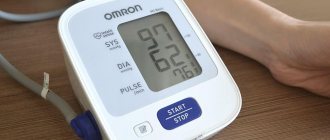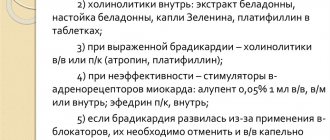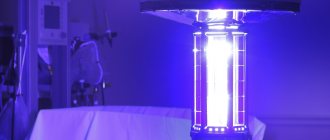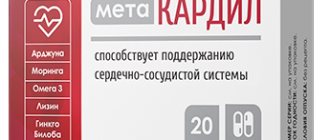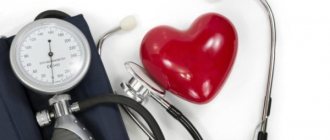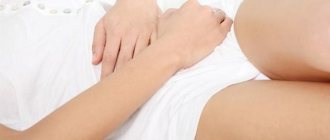How to lower blood sugar with diet
You can reduce blood sugar only if you eat properly - eat vegetables, proteins, healthy carbohydrates, fats, create a menu according to the principles of diet No. 9, use substitutes instead of sugar.
Products to urgently reduce indicators
No food can reduce sugar. To prevent it from increasing, the diet includes:
- non-starchy vegetables - zucchini, broccoli, cauliflower and white cabbage, cucumbers, tomatoes, herbs, raw carrots, eggplant, sweet peppers, Jerusalem artichoke;
- lean boiled fish, seafood, chicken, rabbit;
- moderate fat dairy products - cottage cheese, fermented milk drinks;
- unsaturated fats – avocado, nuts and seeds up to 30 g, vegetable oil up to 2 tablespoons.
This diet is considered low-carbohydrate and can only be followed until the indicators normalize. It will help to quickly reduce sugar while taking medications. Then the presence of carbohydrates should be expanded with whole grain porridges, black bran bread, berries, and unsweetened fruits.
Menu for holding numbers in diabetes
There are 9 diet rules that help maintain normal glucose levels in diabetes:
- the following are prohibited: all sweets, confectionery and flour products made from white flour, fatty, fried foods, brews, semolina, fast food, chips, grapes, bananas, dates;
- limit the intake of butter (up to 15 g), sour cream, cream (up to 20 g), eggs (1 every other day), sweet fruits, berries, dried fruits;
- Vegetables should predominate (except for potatoes, boiled beets and carrots), whole grain porridge, vegetarian first courses, fresh vegetable salads with lemon juice and herbs;
- meat and fish can be boiled, stewed and baked;
- fractional meals at least 5 times a day, carbohydrates are evenly distributed between meals.
Proper use of sugar and sweetener
To normalize metabolic rates, sugar in any form is urgently excluded from the diet. Hidden sources of its supply should also be taken into account:
- store-bought juices, sauces, ice cream;
- cakes, pastries, waffles, cookies, sweets;
- curd desserts;
- honey;
- all types of canned fruit, marinades.
At the same time, it is important to reduce the amount of sugar and know what to replace it with in order to lower the levels of diabetics. For this purpose, sweeteners are added when preparing desserts. They differ in composition and properties:
- fructose - does not cause a spike in sugar, high in calories, if the dose exceeds 30-40 g per day, it contributes to obesity;
- sorbitol - less sweet than sugar, has a aftertaste, the norm is 15-30 g, large quantities are laxative;
- erythritol – has no calorie content, is well tolerated, has a neutral taste;
- stevia – natural, no calories, 200 times sweeter than sugar, maximum dose of extract 300 mg, has no contraindications, improves diabetes;
- sucralose - obtained from sugar, has no calories, is safe, retains its properties during heat treatment, and has no aftertaste.
Ways to normalize hyperglycemia
The state of acute hyperglycemia in diabetic patients is relieved in a hospital setting. Emergency medical care and subsequent treatment can prevent the development of diabetic coma. If the sugar level is not critically elevated and the condition is not urgent, diabetics use traditional medications to stabilize glycemia: tableted hypoglycemic drugs for the insulin-dependent type of the disease, injections of medical insulin for type 1 diabetes.
In addition to medications, the following methods of neutralizing hyperglycemia are used:
- Diet correction.
- Physiotherapy.
- Traditional medicine recipes.
Important! Uncontrolled independent attempts to reduce sugar can be harmful to health. If the reference values deviate, you should consult a doctor and, if necessary, undergo additional examination.
Reducing blood sugar levels with foods at home
A blueberry diet is beneficial for diabetes . It contains a lot of tannins and glucosides, so it is useful to consume berries and a decoction of blueberry leaves to lower blood sugar.
- Brew 1 tsp. chopped blueberry leaves in a glass of boiling water, leave for 30 minutes, strain.
Take 1/3 cup 3 times a day.
- How to donate blood for sugar
a diet of fresh cucumbers is useful to normalize blood glucose levels - the vegetable contains an insulin-like substance and reduces appetite.
Buckwheat is an essential product that lowers blood sugar. For treatment, it is useful to prepare the following composition:
- Wash the cereal, fry without adding oil, grind in a coffee grinder.
Store in a closed glass container.
Cooking method:
- Pour 2 tbsp. buckwheat powder with kefir or yogurt, leave for 12 hours.
Take one hour before meals.
Jerusalem artichoke (earthen pear) normalizes the functioning of the gastrointestinal tract, weakens, and lowers blood sugar levels.
- Prepare salads from fresh tubers or take 1 tsp. powder.
Powder recipe:
- Wash the nodules, dry them, chop them finely and grind them.
Jerusalem artichoke is useful for vascular and metabolic diseases, and allows you to reduce the daily dose of insulin.
Cabbage is rich in fiber, pectin, vitamins, and substances that suppress the development of pathogenic bacteria. Cabbage juice helps remove fluid from the body and helps lower blood sugar.
- Blood sugar dropped sharply: symptoms, what to do and what the danger is
The juice is rarely useful as a choleretic, anti-inflammatory, antimicrobial effect, helps normalize cholesterol levels, dissolve kidney stones and gall bladder, and is indicated for cholecystitis. In combination with honey, it is used as an expectorant.
Radish juice lowers blood sugar and helps with congestion in the gastrointestinal tract. Remedy for constipation and increased lactation.
Potato juice lowers blood glucose levels and helps with digestive disorders:
- Take 0.5 cups of potato juice 2 times a day half an hour before meals.
Beetroot juice is good for diabetes :
- Take fresh 4 times a day, 1/2 tsp.
Blood sugar levels are also reduced by the juices of carrots, zucchini, pumpkin, and tomato .
To reduce sugar levels zinc ; it is part of insulin, a catalyst for chemical reactions.
Oysters, sprouted wheat, and brewer's yeast are rich in zinc. Eating white bread increases zinc deficiency.
Experiments on rats have shown that excessive consumption of white bread and sweets leads to sharp fluctuations in blood sugar levels and causes a biological need for alcohol. Metabolism disrupts the release of a significant amount of insulin to convert dietary sugar. Caffeine and nicotine exacerbate the need for alcohol.
Thus, in order to stop drinking, you must first normalize your diet.
- Blood sugar 11 what to do and how to avoid diabetes?
Can I drink coffee?
The question of drinking coffee for diabetes has not yet received a clear answer. There is an assumption that caffeine improves the sensitivity of body cells to the hormone insulin. Based on this, coffee can not only be drunk if you have diabetes, but it is also necessary. In addition, the drink improves your mood, makes you feel more alert, and stimulates brain activity.
On the other hand, there is also harm:
- increased blood pressure;
- load on the heart muscle;
- powerful diuretic effect (can be quite useful);
- weakening of bone tissue;
- increased acidity levels;
- insomnia.
Thus, diabetic patients can be advised to drink one cup of weak coffee every day. At the same time, you should not put not only sugar in it, but also cream. Cinnamon would be a useful addition as it also helps lower sugar levels.
Causes of high glucose levels
It is believed that glucose levels may rise due to the consumption of foods containing simple carbohydrates. However, this is only true for patients with diabetes or prediabetes. In fact, the problem is much deeper. Glucose levels are affected by many factors, for example, diseases of some internal organs, various inflammatory processes, and diseases of the digestive tract. It is also worth knowing that in stressful situations, there is a rapid release of adrenal hormones and glucagon (pancreatic hormone) into the blood, which leads to an increase in glucose levels.
In addition to diabetes, the following causes of high blood sugar can be identified:
- increased production of growth hormones (with gigantism);
- taking certain medications;
- Cushing's syndrome, leading to malfunction of the adrenal glands;
- drinking alcohol and smoking;
- disturbances in liver function;
- diseases of the intestines and stomach;
- disorders of the thyroid gland;
- stress;
- taking contraceptive medications;
- severe premenstrual syndrome;
- pregnancy (gestational diabetes mellitus).
In diabetics, hyperglycemia usually occurs as a result of poor diabetes control. The most common provocateurs are the following:
- unplanned meals;
- stressful situations;
- large amounts of simple sugars in food;
- failure to take an oral medication or dose of insulin.
Less commonly, hyperglycemia in them can be caused by:
- the dawn effect - the morning secretion of insulin antagonist hormones;
- rebound phenomenon - this is the name of hyperglycemia after a hypoglycemic episode;
- steroid hormones - used in the treatment of other diseases.
The importance of proper nutrition in diabetes
If you have diabetes of any type and stage of development, you need to monitor your diet every day. A properly selected diet not only prevents the disease from progressing, but also helps to cope with it. For example, in the early stages it is enough to adjust your diet and adhere to the established rules. Then you can be completely cured even without medications.
Diet therapy involves creating a balanced diet based on the optimal amount of essential nutrients (proteins, carbohydrates, fats) and total calories.
In this case, special indicators are also taken into account, for example, bread unit (XE). This is the name for a measure that reflects the total amount of carbohydrates in a particular food product. The mass of bread taken as 20-25 g per unit (in terms of pure carbohydrates is 10-12 g, i.e. half as much).
A person suffering from diabetes should consume a maximum of 25 bread units every day, i.e. no more than 250 g net carbohydrates. The permissible value is often less - it all depends on the type, stage of development of the disease, weight, age, general condition and the presence of physical activity.
Thus, to ensure proper nutrition it is necessary:
- Make a diet according to your doctor's recommendations.
- Develop a food menu for the week.
- Select products by quantity based on calorie content, nutritional value and bread units.
- Follow these rules strictly for a significant period of time.
- Include regular physical activity, which will also help reduce glucose levels.
Lower Blood Sugar Naturally
Don't think that all sugary foods raise your blood sugar.
Our bodies depend on glucose as a fuel source, so having carbohydrates in our diet is essential for optimal health. You just need to eat the right carbohydrates.
Problematic foods include those that raise your blood sugar very quickly. These are basically foods that are high in sugar and have little nutritional value such as fiber, protein or fat.
Typically these are highly processed foods, such as:
- White bread;
- Confectionery products made from white flour: muffins, donuts, cakes, cookies;
- Candies;
- Sodas;
- Paste;
- Sweet juices;
- Alcohol.
On the other hand, foods containing fiber, protein, and healthy fats (fruits, vegetables, nuts, and seeds) slow the release of sugar into the bloodstream and do not greatly affect blood sugar levels.
- Normal blood sugar (glucose level): table by age
This explains the fact that although fruits contain sugar, they also contain fiber, which slows down the release of sugar.
Find out which foods lower your blood sugar naturally.
To speed up the process of losing weight and improve your health, I present to you 11 quick and easy ways and folk remedies on how to lower blood sugar levels.
Foods prohibited for diabetes
If you have diabetes, you need to exclude or significantly limit a number of foods. These include:
- sugar, honey and sweets;
- sweet soda;
- smoked meats;
- fat meat;
- baking;
- margarine;
- fermented milk products (if they are fatty).
If you can’t give up sweets, you can use fruits and vegetables, as well as sugar substitutes, such as xylitol. Moreover, the quantities of these products should also be limited - it is better to consult a doctor first.
Sugar substitutes
In cases where it is too difficult for a person to give up consuming sugar even with elevated levels in the blood, substitutes can come to the rescue.
The most famous is Aspartame, which is usually added to tea or coffee - it dissolves well in hot and cold water, contains no calories and has no side effects. Based on aspartame, a safe sweetener Argoslastin was created, even sweeter, but completely safe and has zero calories.
In turn, industrial fructose is difficult to dose, although it is sweeter than sugar, and in an overdose, this substitute leads to excess uric acid and triglycerides.
Long-term consumption of Xylitol impairs vision and causes dysfunction of the gastrointestinal tract, and Saccharin is not absorbed by the body, therefore it is completely prohibited in some countries.
Exercises
According to doctors, regular and feasible physical activity can lower blood sugar and keep it at a normal level.
To do this, you don’t need to do anything special - just do morning exercises, walk as much as possible, choose the most suitable type of sports activity for yourself (biking, rollerblading, swimming, etc.) and, if possible, visit a fitness club.
If there is such an opportunity, then you should choose an adequate type of exercise for yourself - Pilates, yoga, aerobics or other programs, based on your health indicators and the recommendations of specialists.
Wood raw materials
Blood sugar is reduced by: bay and grape leaves, walnut partitions, birch buds and other remedies.
Bay leaf
Slows down the resorption process, preventing glucose from being quickly absorbed into the systemic circulation. Stimulates the performance of the pancreas to produce insulin, speeds up metabolism. Crush 10 leaves into a container, add 500 ml of water, cook for 5-7 minutes from the moment of boiling. Keep in a thermos for three hours, filter. The recommended daily portion is 150 ml (divided into 3-4 doses). Contraindications for use are: increased coagulation, constipation, exacerbation of chronic diseases of the hepatobiliary system.
Treatment with laurel leaves requires caution. At the initial stage, you should take 100 ml per day
Birch buds (fresh)
To lower glucose, birch buds are used as follows: three tablespoons are brewed overnight in a half-liter thermos. Throughout the next day, drink in small portions 1.5 hours after meals.
Hazel bark
Long-term use of hazel bark decoction allows you to maintain a stable glycemic level. Dry the bark and grind it to a powder. For a liter jar you need 2 tbsp. l. raw materials. Brew. Leave for 6–8 hours. Boil and let cook for about a quarter of an hour. The dose of the decoction is designed for 2 days. Drink in small portions.
Walnut partitions
Walnut membranes contain substances that inhibit the formation of glucose from saccharides, which helps prevent an increase in blood sugar. 40 grams of partitions must be filled with 500 ml of water. Cook for an hour, without letting the broth boil too much. Cool the medicine and strain the liquid. One dose requires 1–1.5 tbsp. spoons. Drink until all the broth is gone.
Diet
First of all, avoiding white bread, pastries and all sweet foods and drinks will help reduce blood glucose levels.
If diabetes has already been diagnosed, then the attending physician will set strict dietary restrictions, but if the increase in glucose is only a temporary concern, then you should start adhering to the following recommendations in advance:
- Any alcoholic drinks should be completely excluded.
- All spicy, salty, fried and fatty foods should be removed from the diet.
- You should exclude sweet fruits (grapes, bananas, etc.), potatoes, pasta, mushrooms, and pork from the menu. These foods cause a sharp spike in blood sugar.
- It is necessary to eat a lot of food rich in fiber - fresh vegetables, bran.
- The total caloric content of the diet should be reduced if possible.
- It is advisable to eat food in small portions, but often enough.
- Carbohydrate-rich foods should be consumed in the first half of the day.
- It is advised to replace regular bread with whole grain bread containing bran, and animal fats with vegetable fats.
- It is important to maintain a drinking regime: drink enough water per day.

